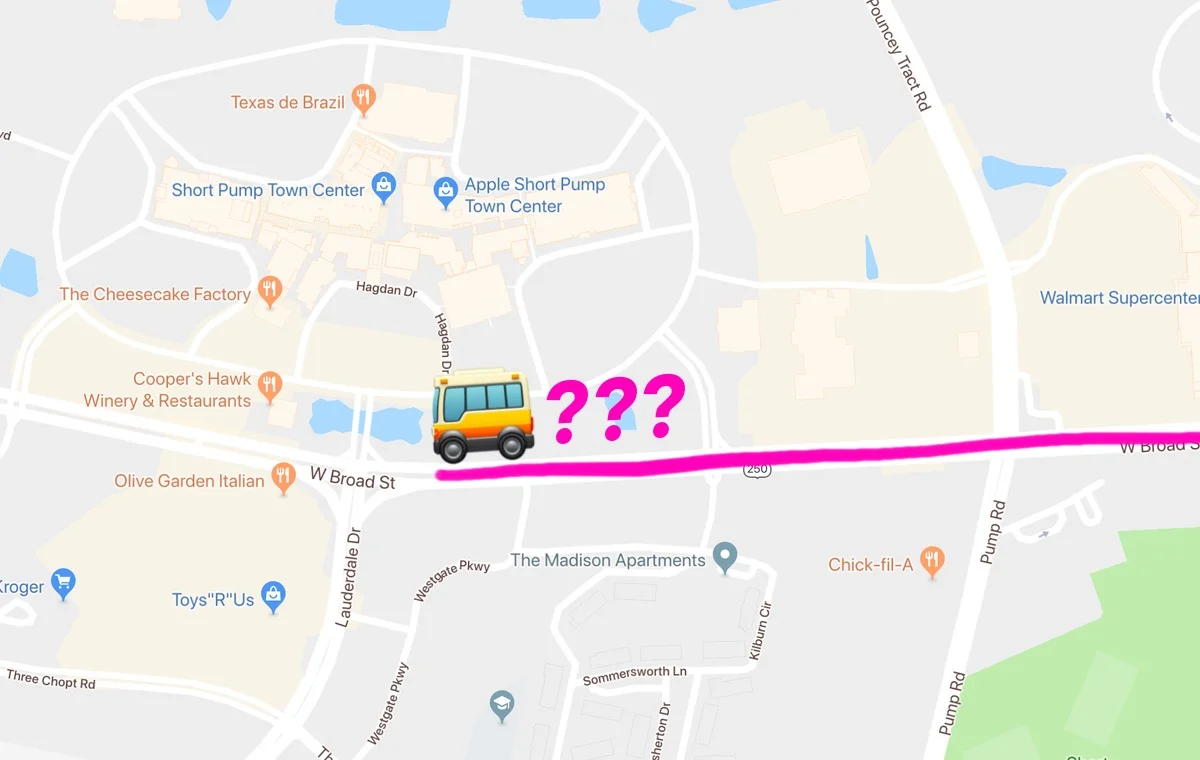Question: If our goal is to provide transport for low-income households, wouldn't a north-south Pulse line be more effective than east-west? What is the Value of the east-west line?
Nicholas: A north-south line would indeed be very valuable—it shouldn't be either-or, but both! The current #37 Chamberlayne is one of the most used lines in the city. It has high ridership and frequent service, which will only increase in the newly redesigned transit network. Additionally, the #32 Ginter Park and #34 Highland Park buses will get better too, and there will be more consistent service on many of north-south routes on the Southside as well. Bus lanes and signal priority, like on the Pulse corridor, would be great for other these routes too! We don't have to start with a full BRT, but just slowly upgrade street after street until more areas get quicker, more reliable service.
However, the east-west route is very useful. Broad Street currently hosts about 20 routes downtown, and nine routes on West Broad (#1, #2, #3, #4, #6, #10, #19, #21, #24). If you add up all the people on all those buses, that's way more than any other corridor in the city. All of those buses are spending a lot of time duplicating each other's service, and it's often you see two buses following each other, each half full. Combining those routes into one single route with a dedicated bus lane and signal priority will quicken many people's trips. Using all that wasted time to provide better service elsewhere in the city means that at no cost we can provide more frequent service elsewhere. Lastly, Henrico is now redesigning its system around the Pulse, and this will likely spur future expansion and service increases to many important places, including West Broad, Short Pump, Eastern Henrico, and the Airport.

